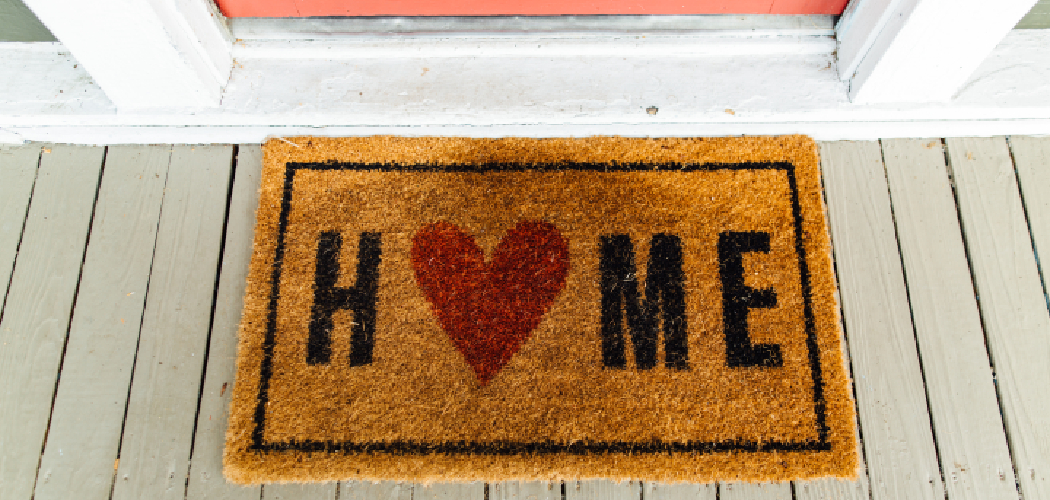Are you wondering how to wash your doormats? You’re not alone! Door mats are essential to any home, but they can get dirty quickly. Luckily, washing them is a simple process that will keep your mats looking and smelling fresh.

With so many people going in and out of your home, it’s essential to have a routine process for cleaning any door mats you may have. Not only do door mats add decoration to your entryway or porch area, but they also help catch dirt and debris from the outside world before entering your home. Knowing how to clean these mats correctly is key to keeping them looking their best.
In this blog post, we’ll discuss some tips on how to wash door mats quickly and efficiently so that you can keep them looking good as new all year long!
What Will You Need
To get started, you’ll need a few supplies. Some items you will likely already have at home, while others may require a trip to the store. Here’s what you’ll need to gather before getting started:
- Vacuum or broom
- Hose or bucket of water
- Mild detergent or carpet cleaner (depending on mat material)
- Scrub brush or sponge
- Towel or drying rack
With these supplies ready, you can start cleaning your doormats.
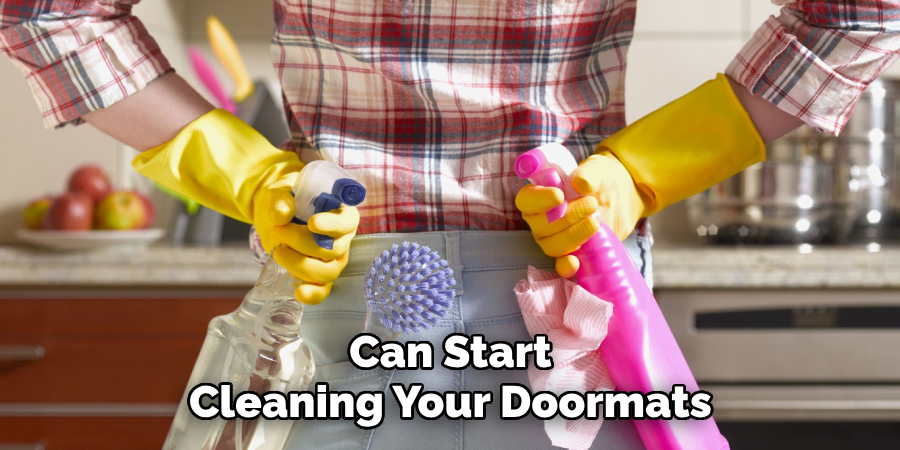
10 Easy Steps on How to Wash Door Mats
Step 1. Remove Loose Dirt:
The first step in cleaning your door mats is removing any loose dirt or debris. Using a vacuum or broom, sweep the mat’s top surface to get rid of visible dirt. Remember to flip the mat over and do the same on the other side!
Step 2. Pre-Rinse the Mat:
The next step is to pre-rinse your mat. This can be done using a garden hose or by placing the mat in a large bucket of water. The goal is to wet the mat thoroughly, which will help the cleaning solution penetrate more efficiently in the next steps. Once you have pre-rinsed the mat, allow it to sit for a few minutes so that the water starts breaking down the dirt. If your mat is heavily soiled, repeat this step until the water runs clear.
Step 3. Apply Cleaning Solution:
Now, it’s time to treat your mat with a cleaning solution. Depending on the material of your mat, use a mild detergent or a carpet cleaner. Dilute the cleaner in a bucket of water as per the instructions on the bottle. Then, apply the cleaning solution to the mat using a scrub brush or sponge.
Cover the entire surface, and pay extra attention to areas with stubborn stains or spots. Don’t be afraid to apply some elbow grease! Once you’ve scrubbed the mat, let the cleaning solution sit for a few minutes to penetrate and break down the dirt.
Step 4. Rinse Thoroughly:
After allowing the cleaning solution to sit, it’s time to rinse the mat. Use your hose or a bucket of clean water to rinse the mat thoroughly. Removing all the soap suds and any residual dirt is important.
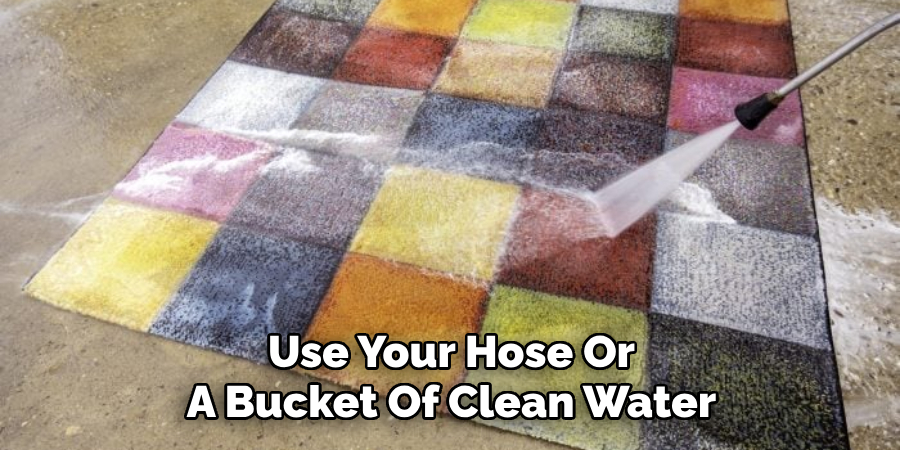
Keep rinsing until the water runs clear. You can use your scrub brush or sponge to help remove any stubborn soap suds. Remember, any remaining soap could attract more dirt in the future, so make sure you rinse thoroughly.
Step 5. Remove Excess Water:
After rinsing, you’ll want to remove as much excess water as possible. You can do this by laying the mat flat and rolling it up tightly, pressing down to squeeze out the water. Alternatively, you can use a wet/dry vacuum if you have one. Removing excess water will speed up the drying process and prevent any potential mold or mildew from forming.
Step 6. Dry the Mat:
Now that the mat is clean, it’s time to let it dry. Depending on the material of your mat and the weather, this could take anywhere from a few hours to a day. Position the mat in a well-ventilated area, preferably under direct sunlight. If drying indoors, you can use a towel to absorb extra moisture. Be sure to flip the mat over halfway through drying to ensure both sides are fully dried. It’s essential to completely dry the mat before using it again to prevent molds or mildew.
Step 7. Inspect the Mat:
Once the mat is thoroughly dry, it’s time to carry out a final inspection. Look over the mat carefully to ensure all stains and spots are removed. You may need to repeat the cleaning process if you notice any remaining dirt or stains. Remember, a clean mat is aesthetically pleasing and more effective at trapping dirt and debris, keeping your home cleaner.
Step 8. Return the Mat to Its Place:
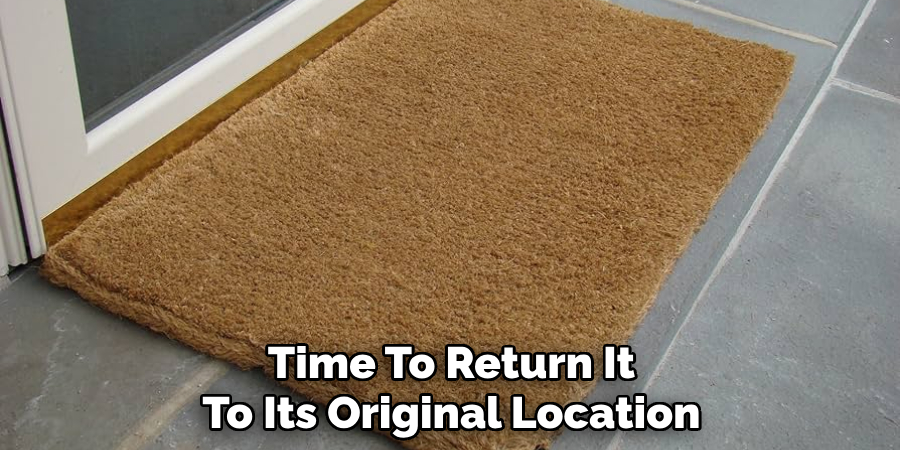
After ensuring that your mat is clean and dry, it’s time to return it to its original location. To keep your mat looking its best, try to prevent as much dirt and dust from coming into contact with it as possible. Ask family members and guests to wipe their shoes thoroughly before entering the house.
Step 9. Set a Regular Cleaning Schedule:
To maintain the cleanliness and longevity of your door mats, it’s advisable to set a regular cleaning schedule. Depending on the amount of foot traffic your home receives, you might need to clean the mats once a week, bi-weekly, or monthly. Keeping this schedule will ensure that your mats are always clean, fresh, and ready to protect your home from outdoor dirt and debris.
Step 10. Enjoy Your Clean Door Mats:
Congratulations! You’ve successfully learned how to wash door mats and have taken the necessary steps to ensure they are clean and fresh. Now, all you need to do is enjoy the cleanliness they bring to your home entrance and the inviting aesthetic they add to your decor. Remember, regular maintenance is key to keeping them in their best condition.
By following these simple steps, you can keep your door mats looking good as new for years to come. So the next time your mats need a deep clean, you’ll know exactly what to do!
5 Additional Tips and Tricks
- Test for Colorfastness: Before washing, it’s essential to check if your mat is colorfast. This can be done by dabbing a wet cloth on a small hidden section of the mat. If the color bleeds onto the cloth, it’s better to have the mat professionally cleaned.
- Use Mild Detergent: When washing door mats, always opt for a mild detergent. Harsh chemicals can damage the fibers and fade the colors.
- Avoid High Temperatures: Never use hot water or dry on high heat as this can cause shrinking or warping. Opt for cold water wash and air drying instead.
- Regular Vacuuming: Regularly vacuuming your door mat can help remove dust and dirt, extending the time between washes.
- Deep Cleaning: For a thorough clean, use a soft brush to scrub the mat with water and mild detergent. Rinse thoroughly and let it air dry completely before use. Remember, over-wetting can cause the mat to deteriorate quickly.
With these additional tips and tricks, you can ensure that your door mats remain clean and in good condition for a long time.
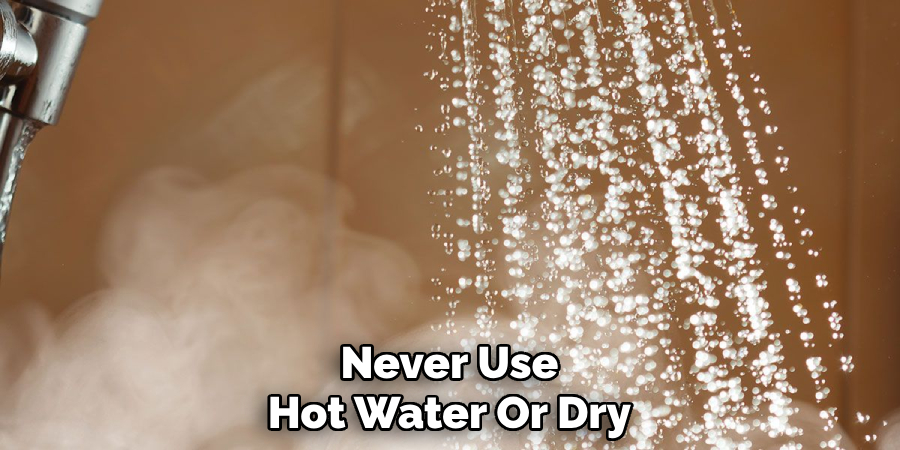
6 Things You Should Avoid
- Avoid Bleach: Never use bleach or other harsh cleaning agents on your door mats. These can damage the fibers and cause the colors to fade.
- Don’t Overwash: While keeping your door mats clean is important, overwashing can lead to deterioration. Only wash your mats when necessary.
- No Rough Scrubbing: Avoid aggressively scrubbing your mats. This can cause the fibers to fray and reduce the mat’s lifespan.
- Skip the Dryer: Do not machine dry your mats. The high heat can cause the mat to shrink or warp. Always air-dry your mats instead.
- Avoid Direct Sunlight: Do not place your mat under direct sunlight while air drying your mat. The sun’s UV rays can cause the mat’s color to fade. Choose a shaded area for drying instead.
- Don’t Neglect Maintenance: Regularly cleaning and maintaining your door mats is crucial to their longevity. Pay attention to this step, or you may end up with a permanently stained and dirty mat.
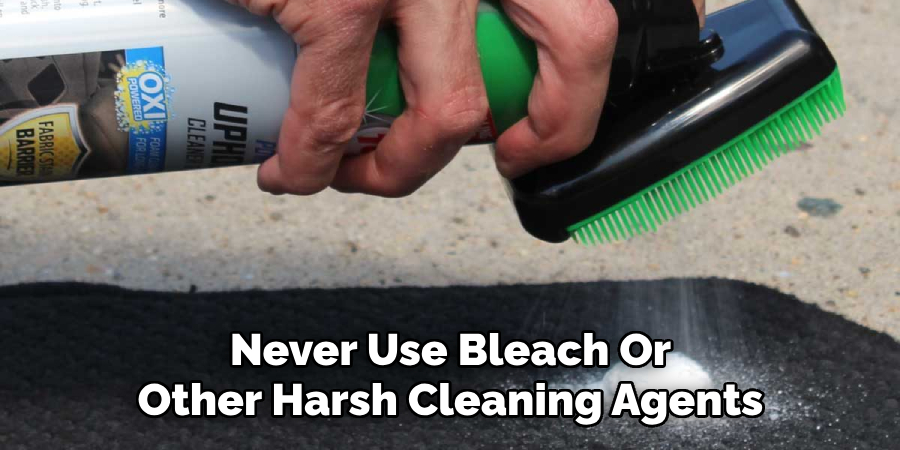
By avoiding these common mistakes, you can keep your door mats looking great and functioning properly for a long time. Remember always to read the care instructions provided by the manufacturer and follow them accordingly to ensure the best results.
What Type of Fabric is Suitable for Door Mats
When choosing the right fabric for your doormat, there are a few things to consider. Firstly, the mat should be made from a durable material that can withstand regular foot traffic and outdoor elements. Some common materials used for door mats include coir (made from coconut fibers), rubber, and nylon.
Additionally, the fabric should also be water-resistant and easy to clean. Coir mats are great for outdoor use as they can scrape off dirt and moisture from shoes, while rubber mats are perfect for indoor use as they can easily be wiped down.
Overall, the best fabric for your doormat will depend on where you plan to use it and your personal preferences. Consider the mat’s purpose and placement before making a decision. And remember to follow the care instructions to ensure your mat stays in good condition for as long as possible. So, when looking for door mats, choose a durable and water-resistant fabric that can withstand regular use and outdoor elements.
What Materials are Harmful to Use on Door Mats
Some materials can cause damage or discoloration when used on door mats. Avoid using bleach, harsh chemicals, and hot water when washing your mats. These can weaken the fibers and cause fading. Also, avoid using rough scrubbing tools that can fray the mat’s fibers. Instead, opt for a soft brush and mild detergent for deep cleaning.
Choosing the right materials and using proper cleaning methods can help extend the lifespan of your door mats. Always be mindful of what you use on them to keep them looking their best. Lastly, don’t forget to regularly vacuum or shake your door mats to remove debris and maintain their appearance. With these tips, you can keep your door mats clean and in good condition for a long time.
So, next time you need to wash your doormat, remember these tips to ensure it stays fresh and functional!
What is the Best Way to Dry Door Mats
The best way to dry your door mats is by air drying them. After washing, hang the mat in a shaded area and let it air dry completely before using it again. Avoid placing the mat under direct sunlight or using a dryer, as these can cause damage or fading.
Ensure the mat is completely dry before placing it back on the floor to prevent mold or mildew from forming. For faster drying, you can also place the mat on an elevated surface, such as a clothesline or drying rack.
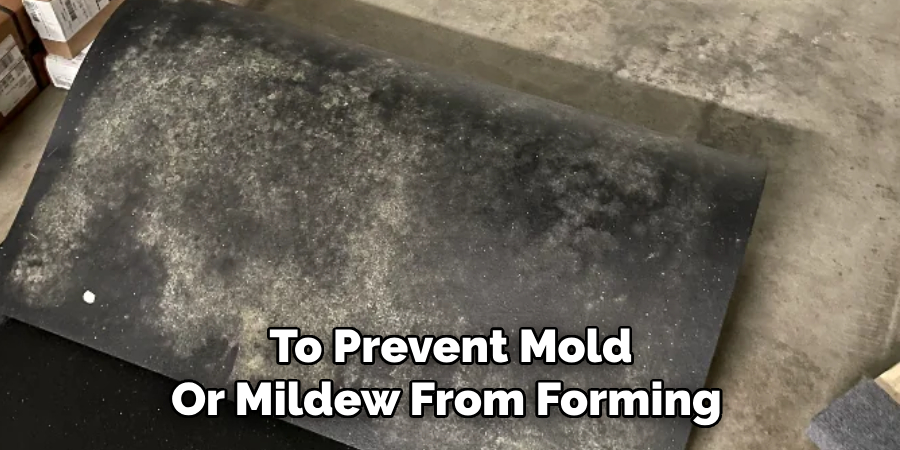
Remember always to follow the care instructions provided by the manufacturer for the best results. Overall, air drying is the safest and most effective way to dry your door mats and maintain their appearance and durability.
So, remember to give your mat enough time to dry before putting it back in place. With these tips, you can ensure that your door mats stay clean, fresh, and in good condition for a long time.
Conclusion
Having clean door mats improves the look of your entrance and helps keep a healthy home by reducing dirt and bacteria. Remember to vacuum and spot clean regularly, then wash at least once a month using the right detergent in cold water. After washing, don’t forget to air dry your door mats and store them in an out-of-the-way location while keeping them accessible.
With just a few simple steps, you can easily increase the life of your doormat – which means better value for you and less waste for the environment. These tips will ensure that your door mats are clean and looking their best for years to come.
Hopefully, the article on how to wash door mats has helped guide you on the dos and don’ts of mat maintenance. Happy cleaning!
